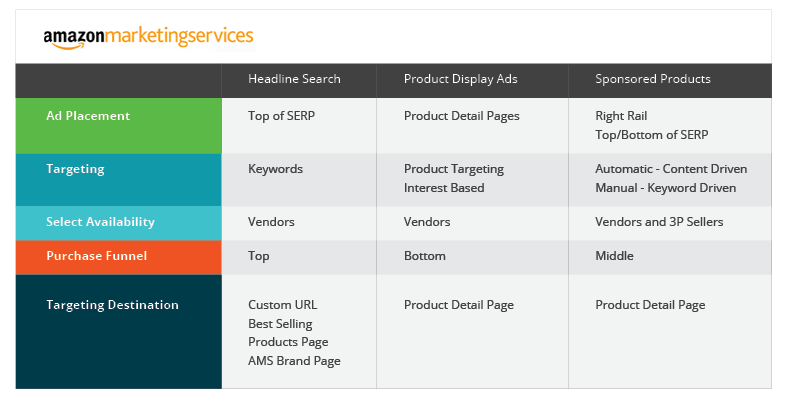Generating a Higher ROI with Amazon Marketing Services – Answered

Amazon Marketing Services (AMS) provides vendors with a number of different tools to help them stand out against their competition and drive traffic back to product detail & branded pages. But in order to see a stronger ROI, vendors must be able to leverage the different AMS ad types to their full potential.
 Last week, David Cooley, Marketplace Channel Analyst at CPC Strategy, presented on how to leverage AMS & the strategies behind each of the three ad types. There were a lot of questions we didn’t get a chance to answer – so here they are now with answers from Cooley.
Last week, David Cooley, Marketplace Channel Analyst at CPC Strategy, presented on how to leverage AMS & the strategies behind each of the three ad types. There were a lot of questions we didn’t get a chance to answer – so here they are now with answers from Cooley.
A. The main difference between Sponsored Product ads through AMS and Sponsored Product ads through Seller Central (3P) is Seller Central allows you to set up both Manual and Automatic campaign structures while AMS only allows for Manual campaigns.
A. Unfortunately no. If so, every single seller on Amazon would want to select their ad to run at the top of SERP 1 because that is the most likely to be seen.
A. The easiest way to scale an ad would be to use the Copy feature on the far right hand side (see below). This feature essentially allows you to recreate an ad with the exact same specs and details but also allows you to make edits or changes before it goes live.

A. You can add your own text within any type of Headline Search ad (Brand Page, Custom URL, Best Selling Page) as well as any Product Display ad. The main difference is, because of the way the ads are shown by Amazon, the ad copy in the Headline Search ads is much more visible (and therefore more important) than the Product Display ads.
A. This is a really good question. There are several factors involved in having your ad seen or not. Bid level is a major one of those factors but Amazon also accounts for things such as content and relevancy of your product to the keyword you are bidding on. For example, if you are bidding on the keyword “ties” but selling a wireless mouse, you are far less likely for your ad to show than a seller that is bidding on that keyword and actually selling ties.
A. ROI is reported in AMS by measuring Spend vs Sales. Amazon reports these metrics at both the campaign level and keyword level for Headline Search ads. They will not report an actual ACoS (Advertising Cost of Sale) percentage but it can easily be calculated by comparing the two.
A. If you have a Branded Storefront it does not seem to be a great investment unless you are currently utilizing Amazon Marketing Services (i.e. Headline Search Ads). If you have a branded storefront, but are not driving traffic to there with these types of advertisements, then you may see a lower ROI on your branded storefront, because you are not driving enough relevant traffic there. But it also depends on the vertical of the products your selling, your brand messaging, as well as other factors.
We have seen with some of our clients, that when they are using AMS ads and driving consumers to Branded Storefronts, they will see a higher ROI through their Storefronts. The storefront requires more bandwidth to manage, so if you are not driving relevant traffic to it with ads, then we do not see it as a necessary investment.
​
